
The Best Dog Food for Labs: Top 8 Dog Foods for Labrador Retrievers
Best Dog Food for Labs
You want to make sure you are feeding your Labrador the best possible food, but with so many options on the market, it can be hard to know where to start. I was just like you a couple of years ago!
Not all dog foods are created equal. Just because a food is marketed as "premium" or "gourmet" does not mean it is actually good for your dog. In fact, some of the most expensive dog foods out there are not even worth the money.
This guide will help you choose the best dog food for labs whether you have a pure bread, mutt, retriever or something similar. Most guides ignore the specific health needs, taste preferences, allergies and size of labs... but mine does not.
So buckle up and I'll help you find the best food for your pup in a few minutes.
First a quick note: this website is reader-supported. I spend a lot of time personally evaluating, testing and reviewing each product on this list. When you buy through links on our site, I may earn an affiliate commission. This helps keep my two dogs happy and health.
Best Dog Foods for Labradors
|
Best Overall |
|
|
Best Meal Topper |
|
|
Best for Puppies |
|
|
Best Wet Food |
|
|
Best Dehydrated Food |
1. Best Overall: Blue Buffalo Life Protection Formula Natural Beef and Brown Rice
Blue Buffalo uses real beef as its first ingredient, prioritizing protein which contributes to muscle development and overall health. Complementing beef are brown rice, oatmeal and barley, which provide needed carbohydrates for energy and dietary fiber, essential for maintaining healthy digestion.
The formula also uses LifeSource Bits, a proprietary blend of vitamins, minerals, antioxidants. These are the tiny bits you see along with the larger kibble bits. I like that this one is free from by products as well.

Key Ingredients: Deboned Beef, Chicken Meal, Brown Rice, Barley.
Here is a quick story: our dogs would NEVER just eat the dry kibble unless it was mixed with some wet food until we tried this one. They seemed to figure out the deliciousness because as soon as we got the bag in front of them the sniffed it with reckless abandon.
I put some food in Atlas's bowl (he's the pickier one) and he ate it like it was his first meal in days... no hesitations.
If you scan the reviews you'll see some similar stories. Dogs seem to love this stuff, so give it a try!

2. Best Meal Topper: Bluebird Provisions Dog Bone Broth
There's a few pet food brands marketing dog bone broth, but most of them have nasty ingredients like potato flour or chicken protein (what is that anyways?). Bluebird Provisions makes a 100% human grade grass fed beef bone broth for dogs.
It uses two ingredients (water and grass fed beef bones) and is made and sourced in the USA.

If you are unfamiliar, bone broth is full of collagen protein (99%), which is fantastic for the following:
- Coat health and skin health
- Reducing joint issues (or as a preventative measure)
- Healing digestive issues like stool issues or food sensitivities
The best part is that my two dogs love it, and I'm sure yours will too. I simply add 1/2 tbsp or so on top of their regular meals and splash of water to mix it in. It is a great way to get picky dogs eating or just to spice things up.
Buy directly from Bluebird Provisions or check Amazon.

3. Best Lab Puppy Food: Diamond Puppy Formula
This is a nutrient-rich and high-quality kibble that supports the growth of puppies and meets all their dietary requirements. It prioritizes the health aspect by ensuring a balanced diet and includes essential ingredients such as chicken or lamb meat for protein, along with nutrient-rich superfoods for antioxidants.
With no artificial flavors, colors, or preservatives, this formula is well-balanced with a focus on both flavor and nutrition.

Key Ingredients
Chicken by-product meal, whole grain ground corn, wheat flour, chicken fat.
We tried this with my dog Nitotem when he was a puppy and he loved it. Let's face it, they will eat just about anything at that stage. But it is good knowing you are feeding them a food you can trust.
His digestion seemed to be good and his energy was off the charts... for what that is worth. While it is not grain free or uses fancy ingredients, Diamond is an affordable option you can count on.

4. Best Wet Dog Food: Merrick Real Chicken Dinner
Merrick Real Chicken Dinner wet dog food is the perfect option if you are looking for grain-free, nutrient-packed wet food options.
The primary ingredient is deboned chicken and it is made of 96% animal protein which mirrors diets that your dog's ancestors ate... if you are into that sort of thing.
Being "grain-free" means that it does not contain corn, wheat, soy or any grains, making it suitable for dogs with sensitive digestive systems or grain allergies.

Key Ingredients: Deboned Chicken, Chicken Broth, Chicken Liver, Dried Egg Product
The big thing to note here is that dogs go absolutely bonkers for this stuff... in a good way. It helped my two dogs get a shiny coat (which we get compliments on all the time at the dog park) as well.
The high quality ingredients combined with the fact that it is USA made makes this a buy for me!

5. Best Dehydrated: Honest Kitchen Dehydrated Whole Grain Beef Recipe
If you don't know anything about Honest Kitchen then prepare to have your mind blown. They're one of the only pet food brands I found online that uses 100% human-grade ingredients, makes it in human grade facilities with ethically raised animals and dehydrated organic ingredients.
This all-natural diet is deemed worthy of a 'human-grade' label, which implies it meets the FDA standards for human edibles.
The dehydrated beef recipe is made of beef, oats, barley, organic kelp and an assortment of fruits and vegetables, with no genetically modified organisms (GMOs).

The quality helps labs live long, healthy lives with minimized allergy risks.
While the cost is a bit more than standard kibble, the quality of ingredients make it worth it if it is in your budget. I can't stress enough that this might not be for everyone, and that is okay.
The dehydration process enables easy storage and convenient feeding, simply by adding water, making meal times quick and hassle-free.
I love supporting American made and sourced products. This one definitely hits the mark. Just follow the serving instructions and your lab will love it.

6. Taste Of The Wild Grain Free Pine Forest With Venison
Fun packaging but Taste of Wild really thrives in the quality of ingredients. The Pine Forest product uses pasture raised venison along with lamb and legumes for a naturally grain free formula.
This grain-free option is great for adult labs who may be allergic to grain-based food but is not ideal for puppies. One thing I like is that it incorporates easily digestible fruits and vegetables like blueberries and raspberries, which are great sources of antioxidants.
Speaking of gut health, there are also added probiotics to help with digestion.

Key Ingredients: Venison, lamb meal, garbanzo beans, peas, lentils, pea protein, pea flour
In my experience, this is great for dogs who suffer from itchy and dry skin. My dogs coat health improved greatly once we switched over to Taste of Wild. They also got healthier looking poo's, which is always a welcome sign that the food is working.

7. Royal Canin Labrador Retriever Adult Dry Dog Food
Who knew that some brands make special formulas for labs? Royal Canin does with this awesome specialized kibble which helps quick eaters slow down. This makes complete sense because labs are absolutely crazy for food.
This formula is rich in joint building compounds like EPA, DHA and glucosamine to help support growing lab bodies.
There's also nutrients for skin and coat health, so if you have an itchy dog or one with allergies, this is a fantastic option.

Key Ingredients
Chicken meal, corn gluten meal, chicken fat, oatmeal, barley, brown rice
This is considered a high protein option with 28% and 11% fat. Some people scoff at the cost, but you really do get what you pay for. If it works then it is well worth the cost.
After feeding my dog Atlas Royal Canin, his skin irritation went back down. Don’t know how or why, but it did. So now, we only feed him this one.

8. Purina ONE +Plus Adult Skin & Coat Formula Dry Dog Food
Purina One Plus came highly recommended from my vet. One of my dogs (Nitotem) had parvovirus when he was a puppy, as a result, he has leaky gut and is sensitive to most ingredients.
He used to itch himself like crazy to the point where he opens sores all over his paws, arms and feet. The poor guy was a mess.
Finally, we tried this salmon based kibble and it made a world of difference. No more itching or hot spots.
It is full of omega 3 fats (0.9%) which are great for heart health, coat health, joints and brain development thanks to EPA and DHA.
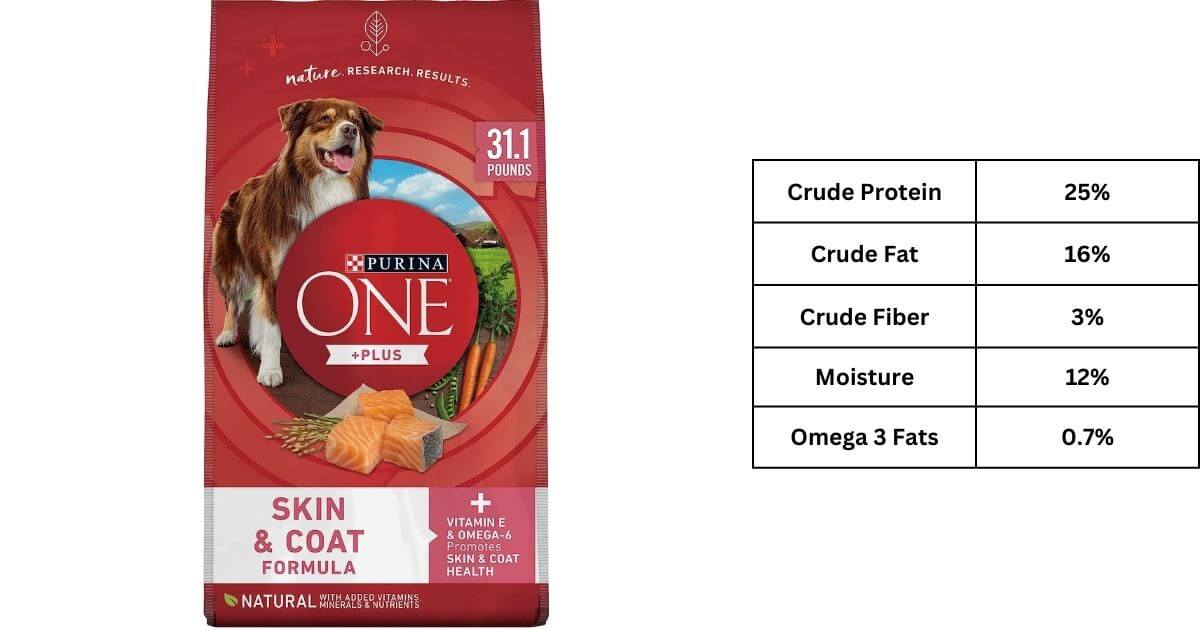
Key Ingredients: Salmon (Source of Glucosamine), Rice Flour, Pearled Barley, Oat Meal
There's also natural prebiotic fiber which is shown to significantly improve the dogs' digestive health.
One particular standout is that Purina is poultry-free, making it ideal if your lab is sensitive to chicken products. Try some today!

Labrador Buyer's Guide: What to Look For
Selecting the right dog food for a labrador retriever requires careful consideration of factors like the nutritional needs of labs, lab specific health concerns, cost, potential allergies and digestibility concerns.
The first and foremost aspect to consider is the quality of the ingredients. While affordability can be tempting, know that you get what you pay for. While high prices may be seen as a con, lower prices often mean shortcuts with sourcing and ingredient quality.
You also want to check the label for the Association of American Feed Control Officials (AAFCO) statement, which confirms the dog food meets minimum nutrient requirements. This gives you peace of mind that it meets the minimum AAFCO standards.
Let's get into more specific nutritional needs.
Nutritional Needs for Labradors
Specific nutritional needs for labradors include high protein, lower fat, taurine, digestible carbs, glucosamine and chondroitin, omega 3s, calcium and phosphorus and probiotics. Saddle up as I will explain each one of these for you.
1. High Quality Protein
This is pretty self explanatory. All dog breeds evolved from eating high quality, animal protein centric diets. As such, labs do well on higher protein. For the sake of this list, all of the dry foods have at least 22% protein.
Side note: a good way to boost their protein is by using bone broth as a meal topper.
2. Lower Fat
Labrador Retrievers, much like other dog breeds, do require fat in their diets, but the intake should be moderated. According to the AAFCO, adult dogs should have a minimum of 5% fat and puppies should have 8% in their diet.
However, it's crucial to ensure Labs have 'good' fat from ingredients like eggs, fish oils and flaxseed. These fats contain triglycerides and fatty acids, which are essential for the dogs' energy, palatability of food, vitamin absorption, and cell structure and function.

Some fatty acids to look out for are omega-3s, and docosahexaenoic acid (DHA). DHA is notably important for Lab puppies as it aids in brain and eye development. As a large breed, Lab puppies grow rapidly and require balanced nutrition to support this growth. I like to see at least 0.5% omega 3s on the label.
A study by the Royal Veterinary College (RVC) found that Labs are 1.6 times more likely to be obese than other dog breeds, hence the need for a moderate or low-fat diet (1).
3. Digestible Carbohydrates
Digestible vary depending on what your dog may be sensitive to. Some dogs are find with grains while others require a grain free diet. Things like sweet potatoes, potatoes are generally safe for most dogs.
Sometimes it requires some trial and error to figure out what works your your pup.
AAFCO recommends that you limit Labs' carbohydrate intake to no more than 20% of their diet, as too many carbs can lead to health issues like obesity, diabetes, and cancer.
4. Chondroitin and Glucosamine
Chondroitin and glucosamine are two potent joint building compounds. As Labradors age, their joints can become less supple and more prone to deterioration. The senior Labrador Retriever needs extra support to keep their joints strong and flexible, and that's where glucosamine and chondroitin come in.
These can be found in things like chicken meal or they can be added individually to dog food formulas.
5. Omega 3 Fatty Acids
Omega 3 fats are fantastic for brain development, eye health, reducing inflammation and joint health. Some pet food companies include these somewhere on the ingredient list as 'fish oil.'
Many of the brands on the list above do have omega 3 fats to tune of 0.3% to 0.7%.
6. Calcium and Phosphorous
Calcium and phosphorus play vital roles in the diet of Labs, particularly in their puppy stages, due to the rapid bone growth they experience as a larger breed. These elements are crucial to proper skeletal development and form a balanced ratio of about 1:1 in their diet.
- Calcium: Key in forming strong bones and joints, calcium is particularly essential for Labrador puppies who undergo quick growth spurts. A diet with the correct calcium level can assist in preventing conditions like Osteochondritis Dissecans (OCD). However, calcium intake should be managed carefully as an excessive amount can lead to joint issues.
- Phosphorus: This element works in conjunction with calcium to promote healthy bones and teeth in Labs. It should be carefully balanced in the diet as too much phosphorus can lead to liver and kidney problems or hyperphosphatemia.
While these are important nutrients you also want to pay attention to electrolytes in dogs.
7. Taurine
Taurine, an amino acid, plays a critical role in the health of Labradors, though it often gets overlooked by top brands. While some dogs can produce adequate amounts of Taurine on their own, others, including Labradors, may benefit from additional Taurine in their diet. Here are key reasons why Taurine is important for Labradors:
- Cardiovascular Support: Taurine is well-known for its role in maintaining the heart's health. A deficiency in Taurine has been linked to dilated cardiomyopathy (DCM), a heart condition that can lead to congestive heart failure. Ensuring your Labrador receives adequate levels of Taurine can help to support their cardiovascular health.
- Eye Health: Taurine plays a crucial role in maintaining the dog's vision. It nourishes the eye's photoreceptor cells, and a deficiency can result in retinal damage.
- Reproductive Health: For breeding Labradors, Taurine helps ensure healthy outcomes. It supports fetal development in pregnant Labradors and contributes to the health of newborn pups.
- Digestive Aid: Taurine assists in fat digestion by aiding in the creation of bile salts. It can also improve gastrointestinal health, making it easier for your Labrador to digest and absorb dietary fats.
- Antioxidant Properties: Taurine has antioxidant properties that protect cells from damage by free radicals. This helps to maintain overall health and prevent disease.
8. Probiotics
Probiotics are crucial for labs due to their numerous health benefits centered around the digestive system. These "friendly bacteria" are often present in specific foods or supplements.
Key benefits include:
- Digestive Health: Probiotics facilitate the smooth functioning of the digestive system in labs. They help in maintaining a healthy balance of gut flora, thereby enhancing the digestive process.
- Skin and Coat Health: Certain research suggests that the role of probiotics has relevance to the health of the pet’s skin and coat as well.
- Support For Senior Labs: Probiotics can be particularly beneficial for senior dogs. As suggested by the American Kennel Club, these beneficial bacteria may aid in dealing with common age-related issues that can lead to digestive problems.
- Allergy Management: As pointed out by VCA Hospitals, probiotics can potentially help manage allergies in dogs. Some allergies may disrupt the gut microbiome, and probiotics can aid in restoring this balance.
If you suspect your lab has allergies, you can always get them tested or use an at-home pet allergy test.
I used the 5Strands at home pet tolerance test. I loved the convenience to get everything mailed to our home and not have to spend lots of money at the vet.
How Much to Feed Labradors
Knowing how much to feed your Labrador is essential for maintaining their good health. But this is a bit tricky because the amount depends on the dog's age, activity level and weight.
The average Labrador requires about 30 calories per pound of body weight. So, an adult Labrador weighing about 70-80 pounds, for example, would need around 2100-2400 calories per day.
It is important to note that activity level changes this number. Family Labradors that live a more sedentary lifestyle may require fewer calories, while sporty or hunting Labs require more calories.
Labs tend to pack on he pounds when they over-eat, so if you care about this sot of thing, you want to monitor them.
Puppies require more protein than older dogs and the meal size and frequency also change as they grow. Here is a general guide for feeding:
|
Life Stage |
Weight |
Meal Size |
Meals Per Day |
|
Puppy |
15-18 Pounds |
2 Ounces |
4 |
|
Puppy |
24-26 Pounds |
3-3.5 Ounces |
3 |
|
Puppy |
50-60 Pounds |
6-8 Ounces |
2 |
|
Adult Labrador |
61-80 Pounds |
1.75-2.25 Cups |
2 |
|
Adult Labrador |
80+ Pounds |
2.25-2.75 Cups |
2 |
Since nutritional requirements vary based on factors like activity level and individual health conditions, always consult your veterinarian to customize the diet best suited for your Labrador. Keep observing your dog, and adjust meal portions as needed to maintain optimal health.
How to change your Lab's food
If there's a need to change your Lab's food, do it gradually over a few weeks to prevent stomach upset. Switch to the new diet gradually using the following pattern:
Sure, based on the provided research, one could present the information on how to transition a Labrador to a new dog food effectively, by developing the following explanations under different headers in a table form:
|
Week |
Old Food Percentage |
New Food Percentage |
Instructions |
|
Week 1 |
75% |
25% |
During the first week, mix 75% of the old food and 25% of the new food. This gradual change helps to mitigate digestive upsets. |
|
Week 2 |
50% |
50% |
On the second week, maintain an equal distribution with 50% old food and 50% new food. This balance continues to ease the transition. |
|
Week 3 |
25% |
75% |
Transition further during week three, mixing 25% of the old food with 75% of the new food. This significant increase aims to adjust your Lab to the new diet. |
|
Week 4 |
0% |
100% |
By the fourth week, your Labrador should be fully transitioned to the new food. Monitor them closely during this period and beyond. |
Remember, these are general guidelines. You should closely monitor your Lab and adjust their diet as needed. It is always best to consult your vet when designing or changing your Labrador's diet.
Lab Specific Health Concerns to Look For
Some health concerns you should pay attention to are bone and joint issues, obesity, heart issues and eye problems. I'll briefly explain what you need to know below.
Bone and Joint issues
Older lab's are susceptible to bone and joint problems like arthritis and weak bones. For this reason, it is a good idea to look for things like glucosamine, chondroitin, bone broth and omega 3s.
Obesity
Labs get chunky when they overeat... and they love to eat! Seriously, you can notice it quite quickly. This is because of their genetics, so pay close attention if you want them to live a long and prosperous life.
Heart Problems
Labradors are susceptible to heart issues due to several reasons. One key reason is Tricuspid Valve Dysplasia (TVD), a congenital condition that predominantly affects male Labradors.
This condition is present from birth and affects the blood flow within the heart. It can eventually lead to fatigue, coughing, lack of appetite, swelling in the abdomen, difficulty in breathing and weight loss.
Another possible cause is obesity. Obesity can put unnecessary stress on their heart, and it can lead to heart disease among other health problems.
Eye Issues
One of the primary reasons is their genetic predisposition for certain eye conditions. For instance, Labradors are particularly susceptible to Canine Progressive Retinal Atrophy (PRA), a genetic condition involving the gradual deterioration of the retina, which can lead to blindness.
Another issue commonly affecting Labradors is cataracts. While cataracts can occur in any breed, Labradors have been found to have a higher incidence.

Retinal dysplasia is another eye condition that Labradors are genetically predisposed to. This malformation of the retina can lead to potential blindness in severe cases.
It is not just genetics responsible for these issues. External factors such as injuries or infections can also lead to eye issues in you pup.
What ingredients should be avoided when selecting food for a Labrador?
In general, you want to avoid food ingredients that are harder to digest like fillers, artificial preservatives and highly processed ingredients, which could pose digestive issues.
Some common allergens that might cause issues are animal by products, corn, soy and natural flavors.
How can I tell if my Labrador is getting the right nutrition?
Understanding if your Labrador is receiving adequate nutrition depends on several factors including their physical condition, the quality of the dog food and physical activity level.
Here are a few things to look out for.
- Check their Weight: Labs are a high-energy breed, requiring a diet rich in animal protein. However, they have a tendency towards weight gain if over-fed or if they lead a sedentary lifestyle. You can do this visually, using a scale or by feel.
- Balance Exercise and Food Intake: Labradors have relatively standard nutritional needs, similar to other breeds. That being said, you want to make sure you are either educing portion sizes or increasing exercise levels if you feel they are not at the right weight.
- Nutritionally Complete: Dog food should be nutritionally complete and balanced as per the AAFCO (association of American Feed Control Officials) statement found on the label.
Closing Thoughts
There are a lot of factors to consider when choosing the best dog food for your labrador, but I hope that my guide has helped make the decision a little easier. My top recommendation is the Life Protection Formula from Blue Buffalo.
And if you need a meal topper then go for the high protein bone broth from Bluebird Provisions. If that does not work I would check the other options on the list.
And if you're looking for more options then read my guide to find the best dehydrated dog food.
sources:
- https://onlinelibrary.wiley.com/doi/10.1111/jsap.13325
Bluebird Provisions is reader-supported. When you buy through links on our site, we may earn an affiliate commission. As an Amazon Associate, we earn from qualifying purchases.

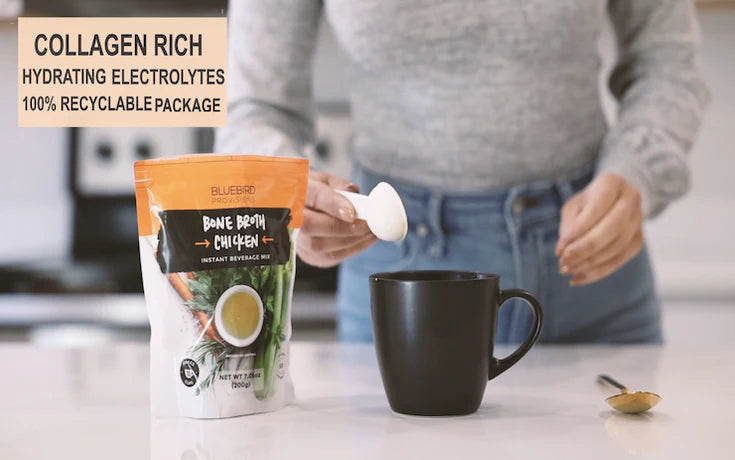
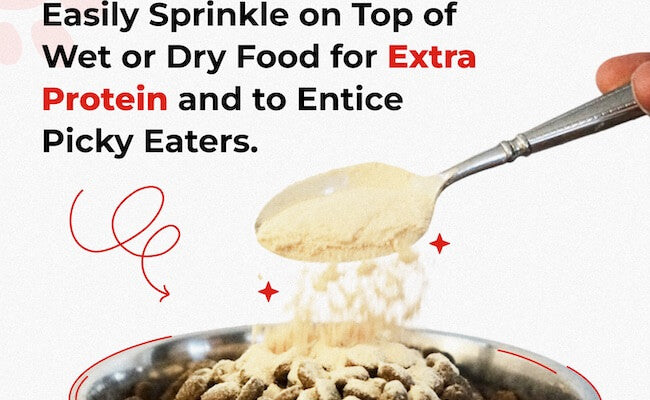
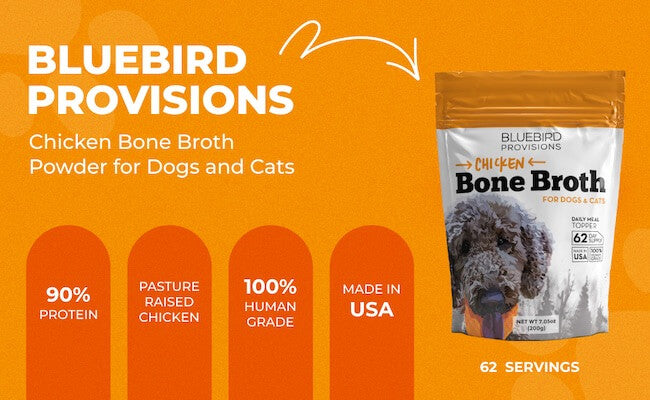
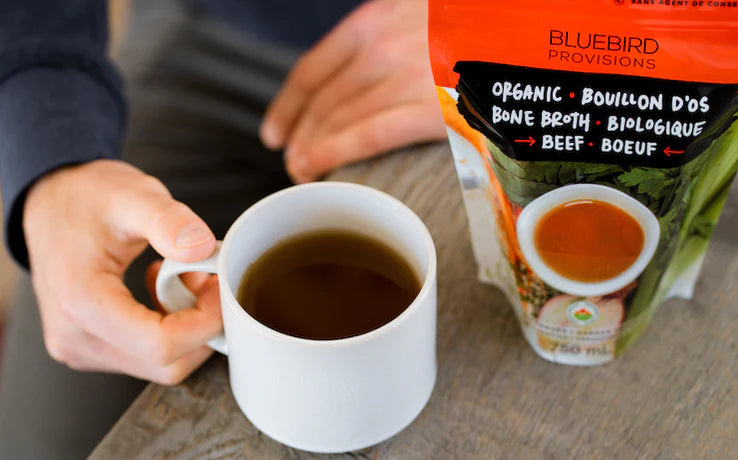





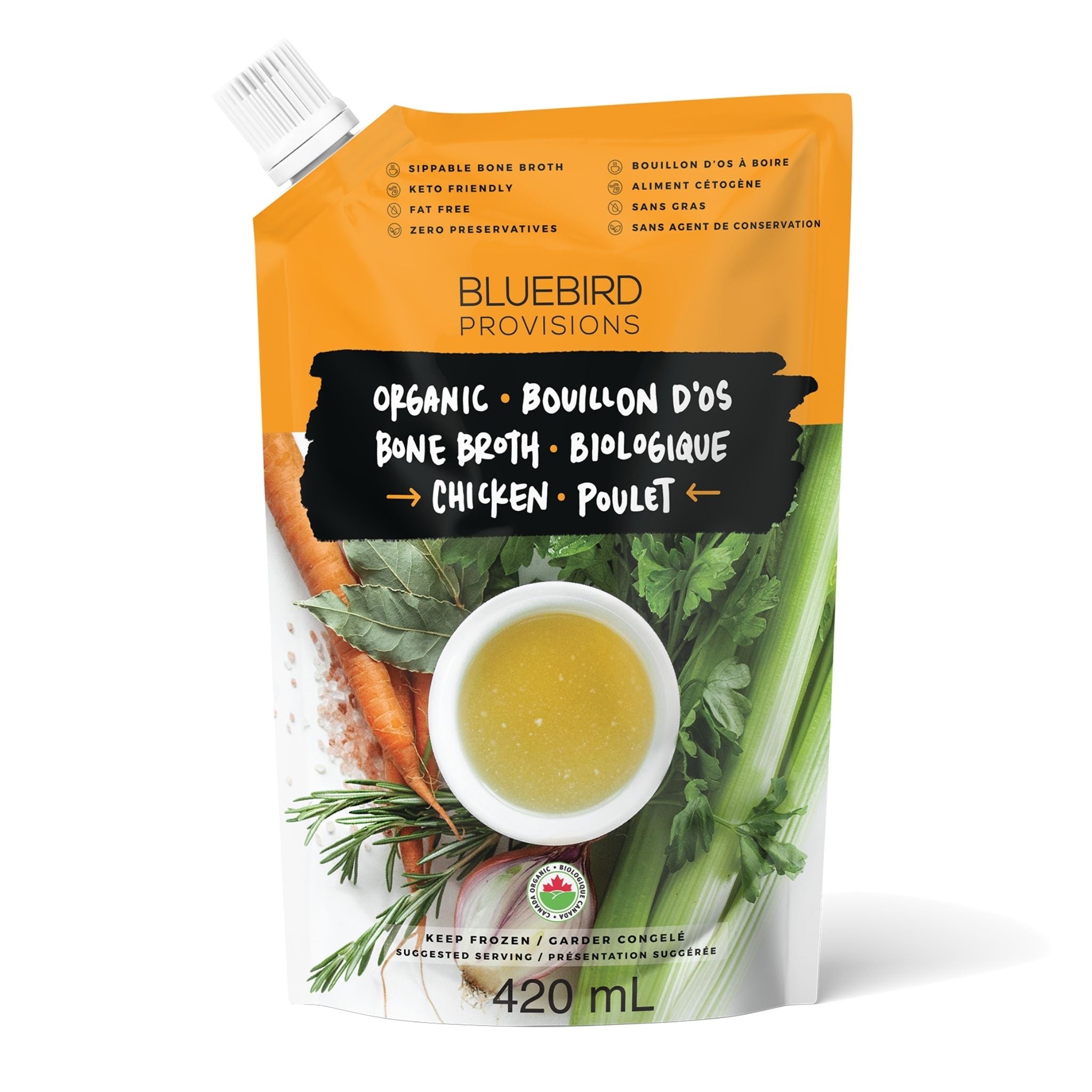
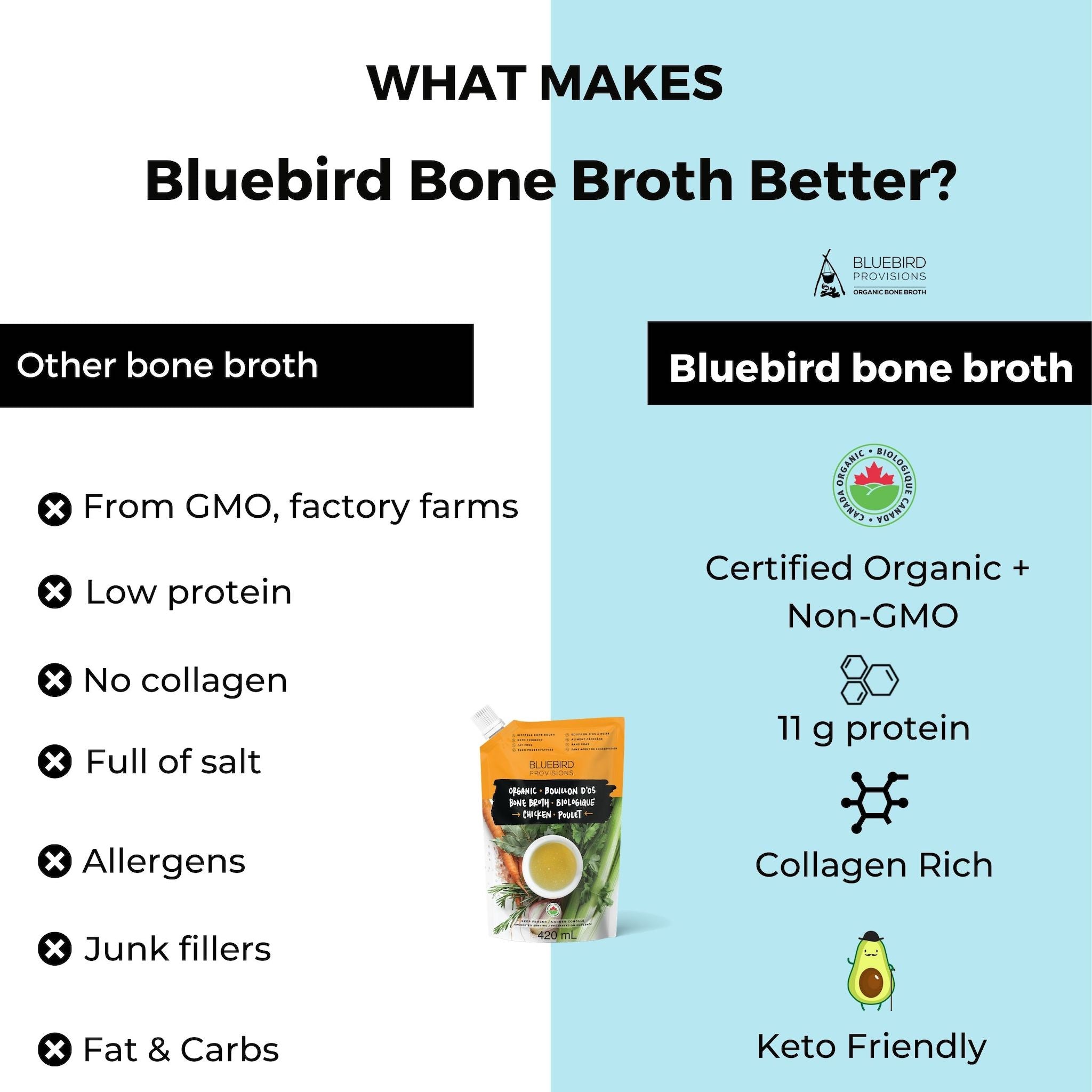
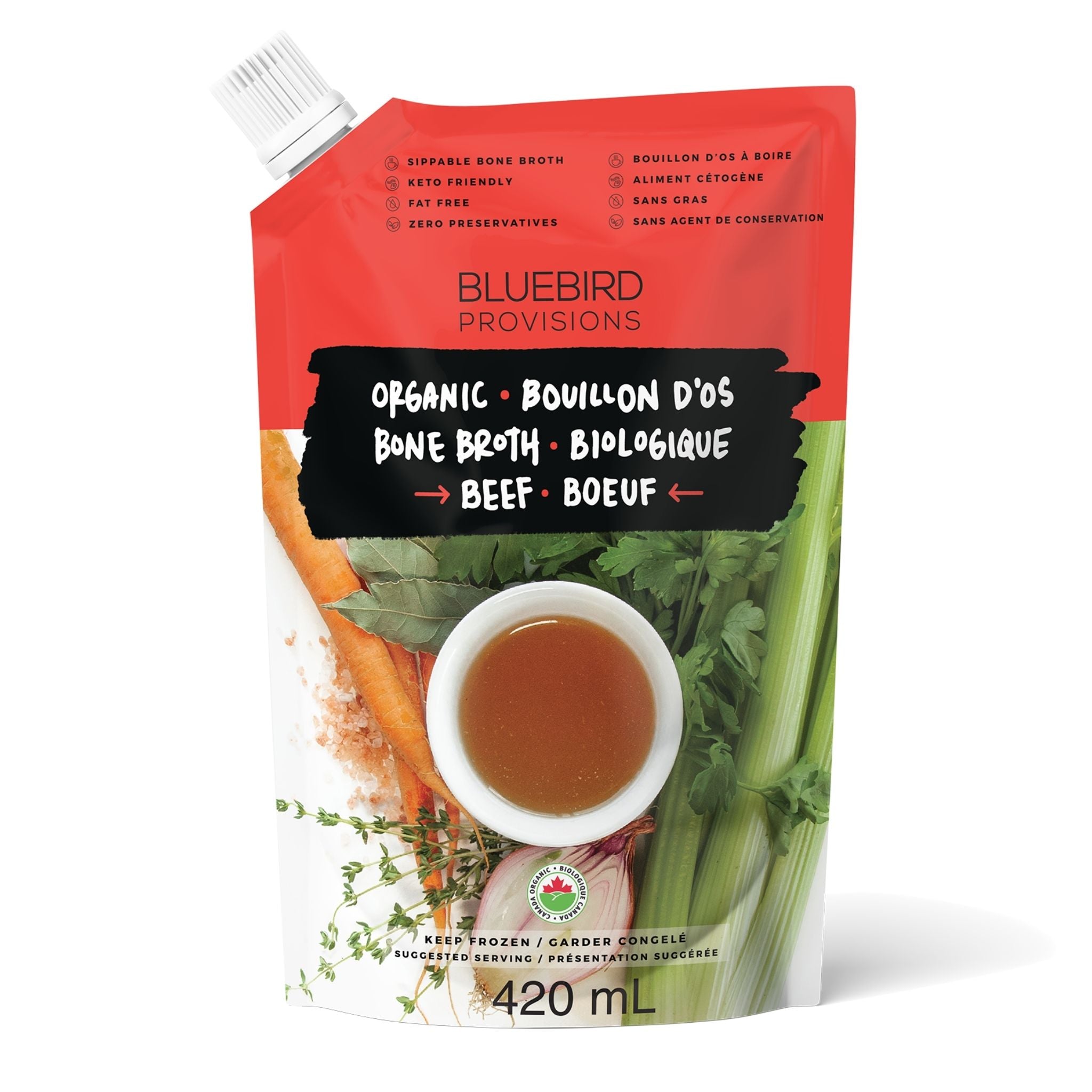
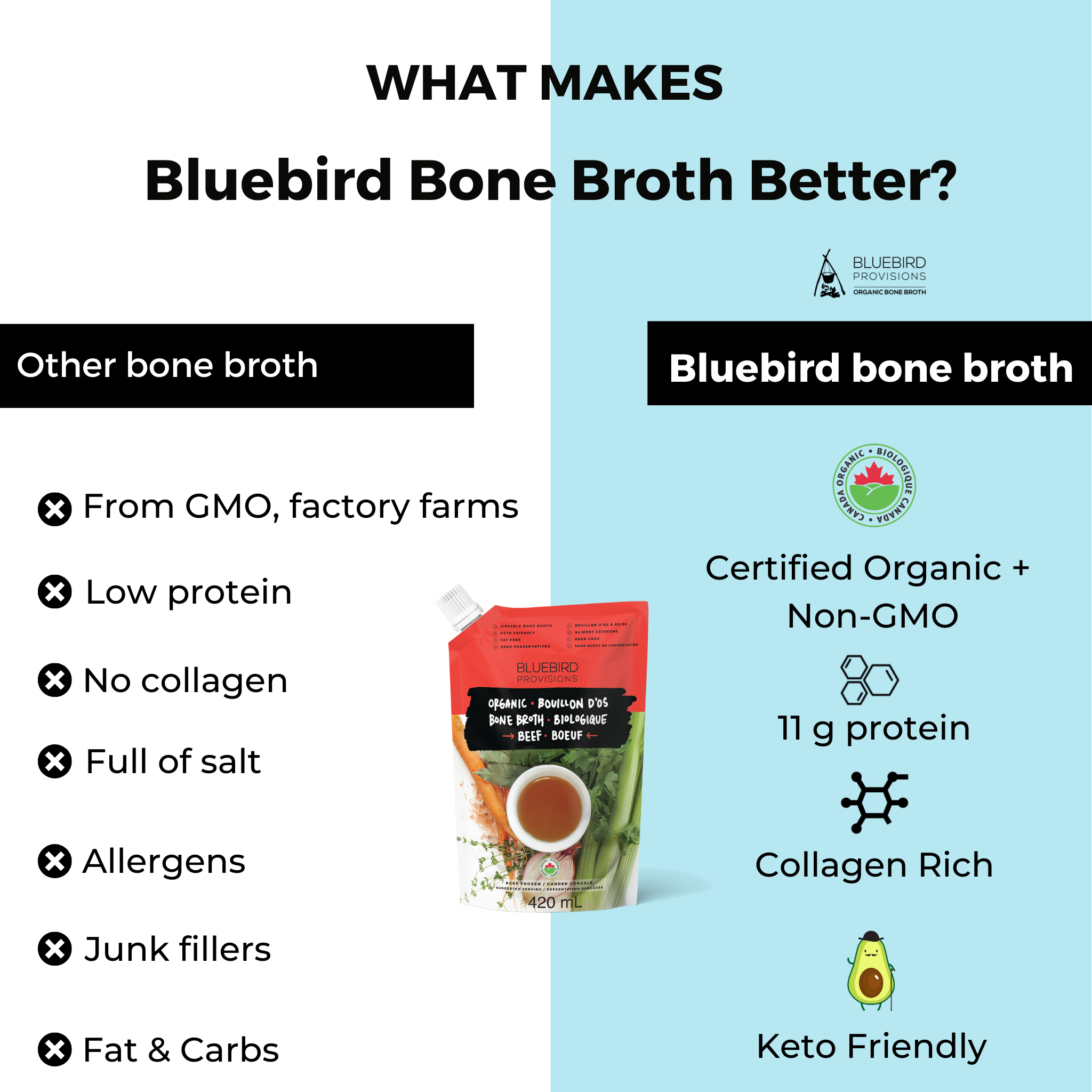
Leave a comment
This site is protected by reCAPTCHA and the Google Privacy Policy and Terms of Service apply.